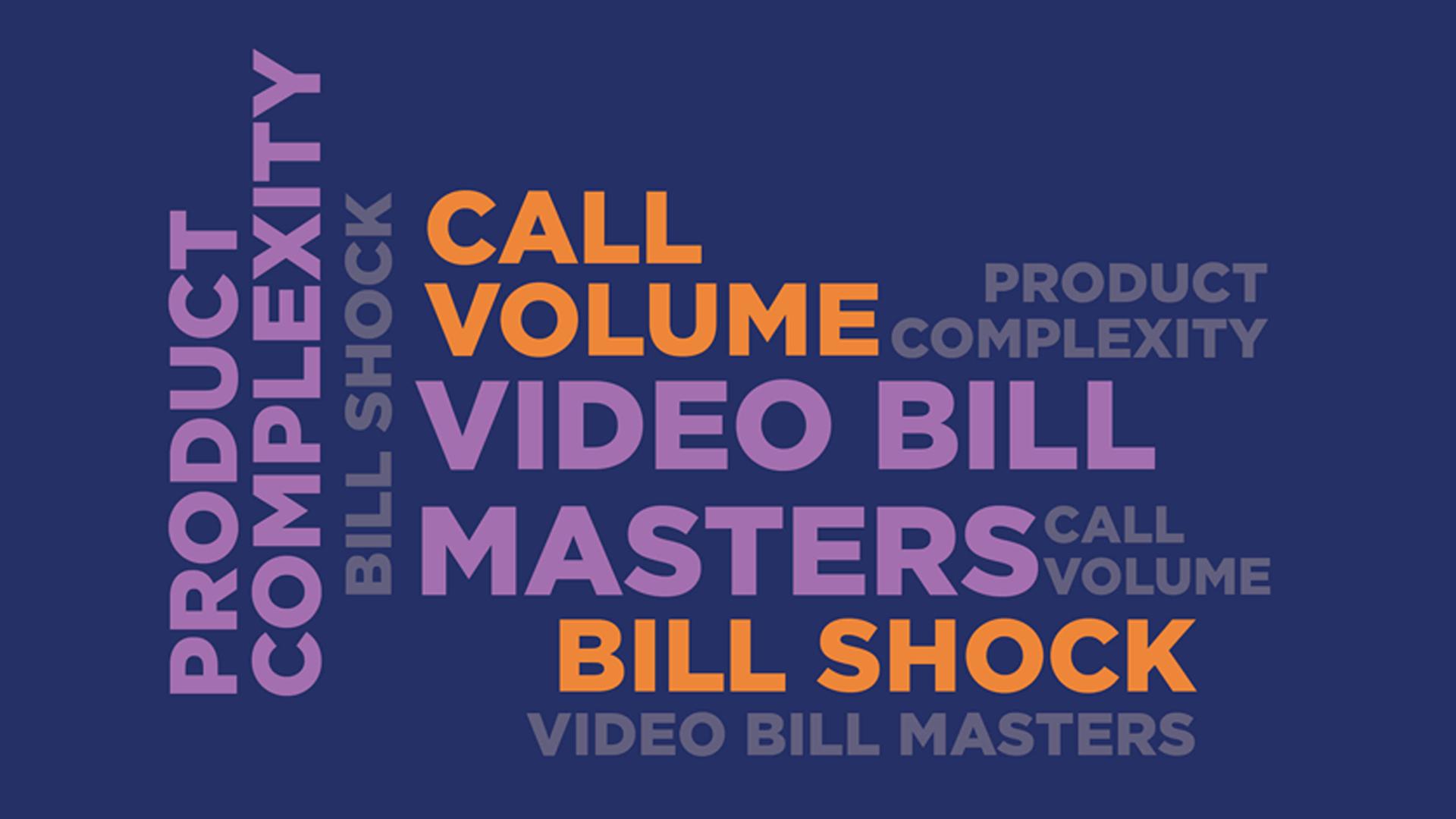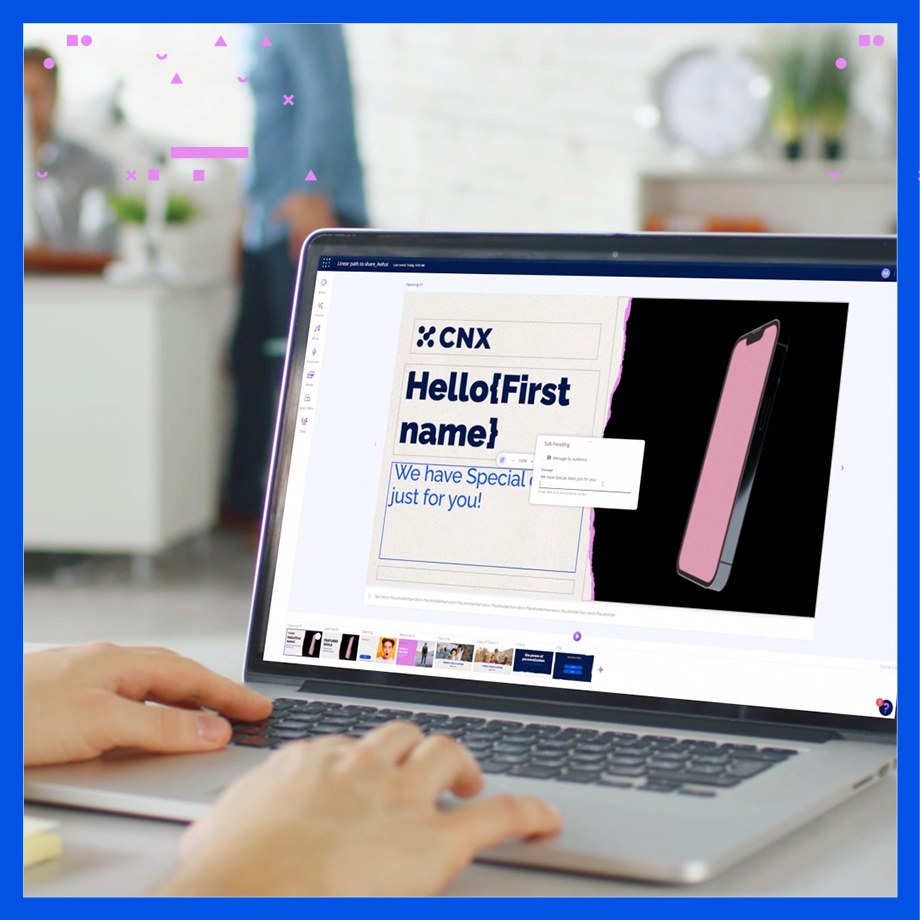Telecommunications, financial services, insurance and healthcare providers are all industries where companies establish a recurring customer relationship with a monthly statement or bill delivery. However, bill shock and product complexity of statements can lead to excessive support costs, churn, and higher barriers to expanding customer relationships. Proactively addressing the complexity of billing and statement administration with personalized SmartVideo is proving to address these challenges.
At the inaugural SmartVideo Summit, I hosted panel discussions around innovations in the customer onboarding process, and successful delivery of video bill and statement initiatives. The industry trailblazers and video bill masters who joined the latter panel — Mike Armstrong, Lead Online Marketing Manager for SmartVideo at AT&T, Chris Nicholson, Vice President of Strategic Consultancy at Humana, and Oguz Kartal, Digital Channels Senior Specialist at Turkcell — all shared ideas and philosophies behind their SmartVideo bill programs.

A true video bill master, AT&T has been running their SmartVideo program for 16 months. The telco giant specifically looks to address the highest call center drivers: a customer’s account balance and monthly due date. Additionally, personalization sweetens the deal for customer engagement: “What’s the sweetest thing that you’ll ever want to hear? Your first name,” said Armstrong, emphasizing that opening the video by personally addressing the viewer increases engagement levels. In addition to 90% positive customer feedback from video bill, AT&T is able to proactively identify and solve customers’ questions or problems they submit within their post-video survey questions. Armstrong reported that 90% of customer issues or questions are proactively answered before the customer calls into the contact center, a phenomenal tactic for better customer satisfaction and care experience. Video bill emails have proven to outperform all other customer engagement emails, as well as significantly reduce customer care calls.

Turkcell, the largest wireless provider in Turkey, deployed SmartVideo bill to two types of customers – new subscribers to explain the first month’s bill, and subscribers who purchased mobile Internet without a data package for usage, and therefore were experiencing bill shock, said Kartal. The company’s video bill showed tremendous success and positive customer feedback. Sent to 584,000 customers, the video bill received a 38% view rate (measured as % of eligible subscribers who saw the first frame of the video), far surpassing the company’s 10% expectation. Video calls-to-action, such as “pay bill” and “buy data package,” received a significant click-thru rate, and 87% of subscribers were satisfied with their video bill. This is a prime example of applying the customer’s behavioral activity and intel to recommend a relevant offer in real-time. By identifying what the customer needs, and not simply cross-selling, Turkcell has very effectively delivered a value proposition for that offer to their customers.

Finally, Nicholson discussed Humana’s plans for smart EOB videos, specifically including personalization and the top ten data points of the member’s explanation of benefits. Humana includes “cross-tell” elements (e.g. mail-order prescription service and a mobile app) – these are targeted and relevant call-to-action opportunities that further educate their customers. Humana is focused on “cross-telling” to their members, a very different philosophy than the standard concept of cross-selling to customers. By leveraging personalization and delivering relevant messages to each member, Humana is able to provide an enhanced and beneficial experience to the customer, with an ancillary benefit to the company as well, said Nicholson.
In addition to Humana’s cross-tell opportunities, both AT&T and Turkcell video bills included CTAs to value-added services. AT&T is able to use data intelligence to help customers make more informed, useful decisions, and not just cross-selling additional services. For instance, a cross-tell opportunity for wireless operators includes, “We saw that you had a data overage this month. Click here to see free WiFi hotspots available to you,” said Armstrong. Again, this “cross-tell” concept is an approach to drive adoption of value-added services that benefit the customer and can add value for the company on the back end.
Another comparable and notable area of business impact for each company is call center reduction, and each panelist shared that a primary goal of their video bill program is to highlight and educate customers on call center drivers. SmartVideo is not the only method for call reduction, but how does this tactic merge with others as a means of driving that value and how do you get leverage between those tactics as part of the program? AT&T is taking a 360-degree approach by training care reps to notify new customers “to be on the look out for their video bill to explain your charges,” in order to garner excitement around it, says Armstrong.
What methods are you using for call center reduction? What is your perspective on “cross-telling” versus cross-selling to a customer? Do you agree with the panelists? Feel free to share your thought in the comments below.
And a very special thank you to our panelists, Mike Armstrong from AT&T, Chris Nicholson from Humana, and Oguz Kartal from Turkcell.







